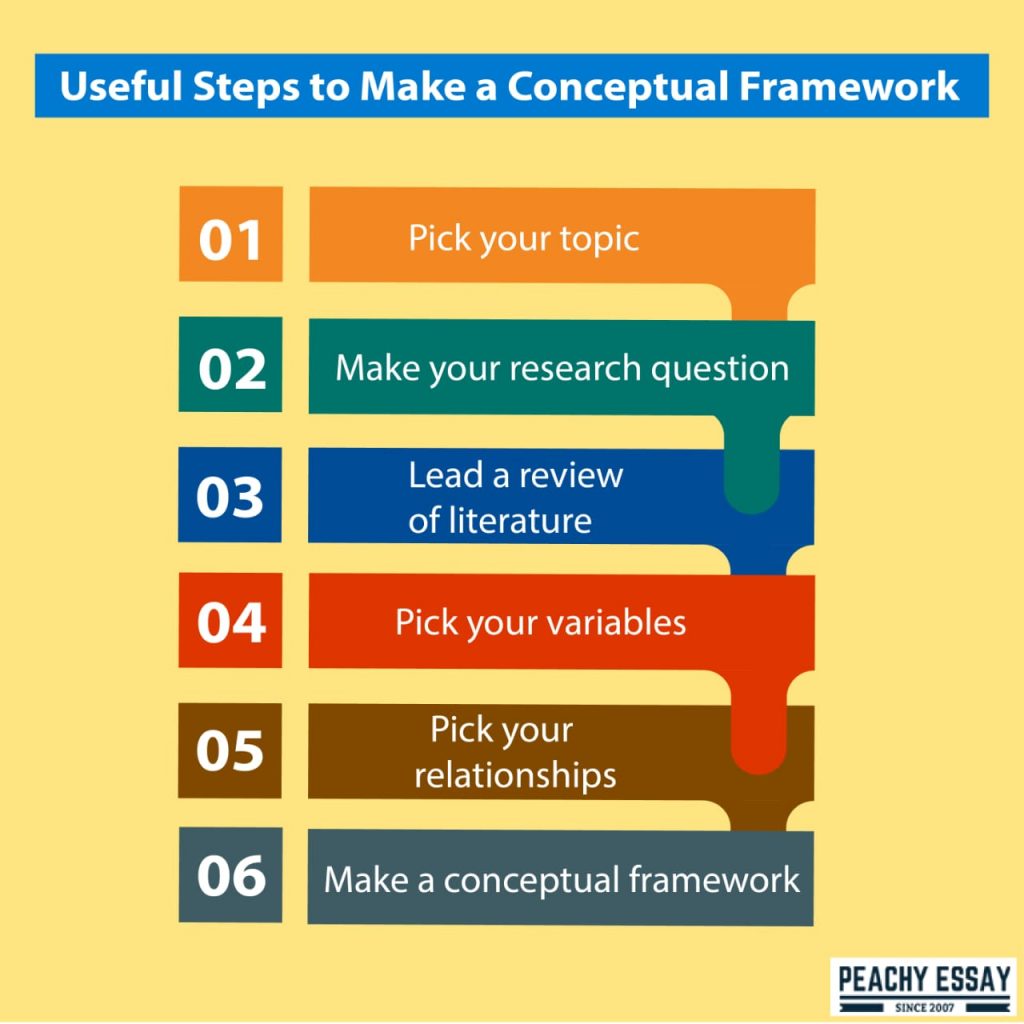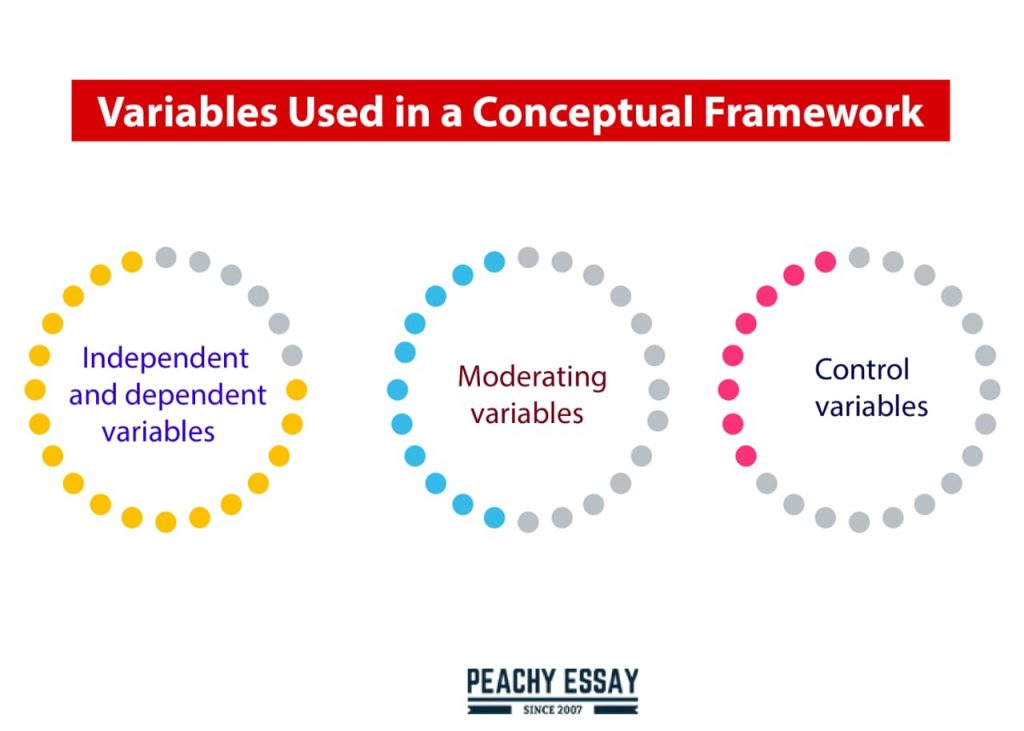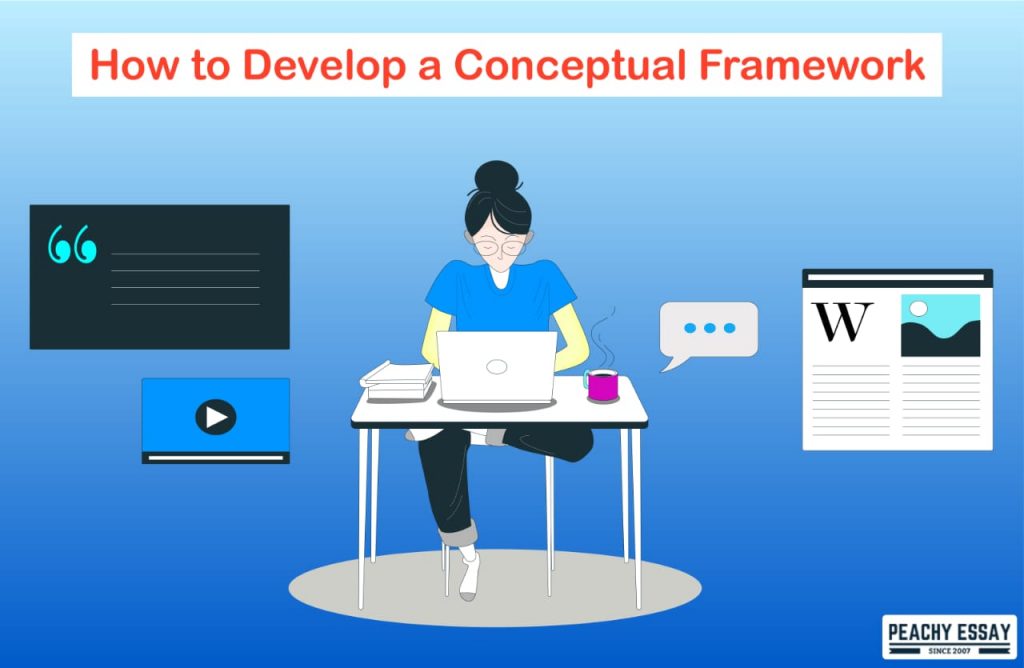Regardless of whether you are a new person to the world of scientific writing or a veteran who needs a speed boost, this article will provide in-depth information on all you require to understand conceptual frameworks.
What is a Conceptual Framework?
The most straightforward approach to clarify a conceptual framework is that it outlines the relationship of variables. Nonetheless, the total clarification of a conceptual framework is longer and requires more elaboration.
We need to comprehend that scientists work to analyze specific parts of the world. In doing such, they make writing where they consider and propose how these specific parts of the world identify with each other. In any case, in clarifying complex connections, the least demanding, easiest, and best method of conveying them is through a specific chart called a conceptual framework.
However, theoretical structures don’t generally need to be in logical writing. Indeed, even the normal individual can make their own. Notwithstanding, really logical and definitive ones are commonly found inside logical writing. Besides, analysts don’t simply make conceptual frameworks out of the blue. Indeed, they direct far-reaching audits of writing that help their reasonable system, which makes their calculated structures much more valid.
How to Make a Conceptual Framework?
Before you set up your conceptual framework, you need to do the accompanying things:

Pick your topic
As a specialist, there are numerous parts of the world you can decide to research. Notwithstanding, the significant interesting point is that not every one of the world’s assets is accessible to us. Also, the exploration may likewise be time-bound. Thusly, one ought to pick a topic that they consider to be extensively accomplished inside the resources that they have and inside the time they are assigned.
Make your research question
The research question must be explicit. The specific parts of who, what, where, how, and why must be obviously spread out. This is the place where quite possibly the main parts of your applied system will come in. The examination question is a reasonable and doubtful inquiry which is the place where your exploration will spin. Your examination question ought to be one that you are really inquisitive about to have a compact theoretical system.
A motivation behind why the research question is a fundamental piece of your theoretical system and your general examination is the thing that puts the concentration and way of your investigation. It maintains a strategic distance from the odds of getting lost as you compose the paper.
Lead a review of literature
A literature review is an activity where a researcher contemplates published works by solid sources identified with the subject. The motivation behind having a literature review is to tell you and your readers about the current thoughts and data on your picked theme. A portion of the key things you ought to recall while reviewing the literature is that it ought to be: associated with the subject; combine the after-effects of the publications you’ve perused, and perceive the zones where there is an absence of data or deficient proof to demonstrate the case. Having a review of the literature limits what you will place in your applied system.
Read more: What is a Literature Review?
Pick your variables
Since you’ve done your exploration, at this point, you can as of now distinguish and pinpoint the variable that has been talked about in the publications you’ve considered and attempt to make an association or unravel how they are connected. As you should have effectively perused a ton of writing, you will find that there are numerous potential factors to look over when directing your investigation.
Anyway, when doing research, as a rule, it’s significant that you pick the main factors as not every one of them will be huge; as you probably read a lot of logical writing, you ought to have the option to observe the significant ones by this topic. Also, while making an applied structure specifically, even though you can pick every one of the factors on the planet, it would be best not to since such a large number of factors in a theoretical system will be befuddling even though it is additionally not a smart thought to pick to a couple of factors or, more than likely your investigation may be excessively straightforward.
As additionally referenced in the past advance, you need to track down the correct degree of multifaceted nature in your investigation that will fit inside your assets and time allocation.
Pick your relationships
Since you have picked your variables, you need to pick how they are identified. Given that you have effectively perused a lot of writing on your subject, you should, as of now, have the option to characterize how every one of your associates is associated with each other. This is particularly critical to note as this will, to a great extent, sway how your conceptual framework will look once you begin making the chart.
Make a conceptual framework
Since you have accomplished every one of the past advances, the last advance is to outline the diagram. How you represent the outline will vary on a case-to-case premise, however by and large, variable names must be spread out obviously and put into square shapes, variables must be connected with lines and arrows, and the arrowheads will contrast contingent upon the idea of the connections. Single arrowheads are for relationships that are one-directional (for example, B influences C and C doesn’t influence B), and twofold headed arrows are for relationships that are 2 directional (for example, B influences C and C likewise influences B). Likewise, lines don’t need to be restricted to interfacing just 2 variables (for example, B and C); a few relationships can be between more factors (for example, B influences C and D).
Conceptual Framework Sample
To have a clearer thought of the way toward making a conceptual framework, we need to attempt to make a solid illustration of it.
Foundation: I am a co-proprietor of a part of Burger King.
- Pick your subject
I’m intrigued to understand what influences the fulfilment of our clients. I will probably have the option to understand what our business’s explicit pieces can impact our clients’ experience.
- Make your research question
The research question I can form is, “What influences consumer loyalties of Burger King?
- Lead a review of literature
I set out to find out about various publications identified with food foundations, explicitly burger joints, and consumer loyalty. From here, I would already be able to think of the variables I can pinpoint from those publications that have been demonstrated to influence consumer loyalty.
- Pick your variables
With every one of the books, academic articles, and investigates I have gone through, it tends to be resolved that there are 3 principal variables: food taste, speed of administration, and staff execution. Clients are a lot worried about the flavour of the item. The measure of time it takes to serve them additionally influences how satisfied or disappointed they are. Finally, the presentation of the staff that serves additionally influences their experience.
- Pick your relationships
I had the option to verify that the 3 factors: food taste, administration speed, and staff execution, are deciding variables of consumer loyalty.
- Make the conceptual framework
The final stage is to make a conceptual framework showing the relationship between variables.
Variables in a Conceptual Framework
A conceptual framework is a composed or visual portrayal of a normal connection between variables. Variables are essentially the qualities or properties that you need to study.
The conceptual framework is by and largely created dependent on a literature review of existing investigations and hypotheses about the point.

Research example
You need to know whether understudies who concentrate more hours get higher test scores. To examine this inquiry, you can utilize strategies like an investigation or overview to test the connection between variables.
Before you begin gathering information, build a conceptual framework to show precisely which variables you will quantify and how you anticipate that they should identify with one another.
A conceptual framework can be planned from various perspectives. The structure yours takes will rely upon what sorts of connections you hope to discover.
Here are the variables used in a conceptual framework.
Independent and Dependent Variables
To a cause-and-effect relationship, we need to distinguish two key variables: the independent and the dependent variable. In our example:
The anticipated, “long periods of study,” is the independent variable (also known as the indicator or logical variable).
The normal impact, “test score,” is the dependent variable (also known as the reaction or result variable).
At the end of the day, “test score” relies upon “long periods of study.” We speculate that the more hours an understudy researches, the better they will do on the test.
Causal connections frequently include a few independent variables that influence the dependent variable. In any case, to keep things straightforward, we’ll work with only one autonomous variable, specifically “long periods of study.”
We will utilize the essential plan segments of boxes and arrows to imagine our normal circumstances and logical results relationship. Every variable shows up in a case. To show a causal relationship, every arrow should begin from the independent variable (the reason) and highlight the dependent variable (the impact).
Moderating Variables
Presently we’ll grow the framework by adding a moderating variable (otherwise known as an arbitrator). An arbitrator adjusts the impact that an independent variable has on a dependent variable.
The moderator, in this way, changes the impact segment of the cause-and-effect relationship. This balance is additionally alluded to as the interaction effect.
In our model, we expect that the number of hours an understudy studies is related to their exam scores.
Now we add the moderator “Level of intelligence.” An understudy’s IQ level changes the impact that the variable “long stretches of study” has on the test score: the higher your IQ, the less long periods of study you should place in to excel on the test.
At the end of the day, the “Intelligence level” arbitrator moderates the impact of the number of study hours on the test score.
Mediating factors
Presently we’ll grow the structure by adding an intervening variable. In a cause-and-effect relationship, and interceding variable is a variable that connects the independent and dependent variables, permitting the connection between them to be better clarified.
Here’s the way the reasonable structure may look if a go-between factor were included:
The mediating variable of “number of practice problems finished” separates the independent and dependent variables. The long stretches of study impact the number of training issues, which thus impacts the test score.
For this situation, the arbiter clarifies why concentrating more hours prompts a higher test score. The more hours an understudy examines, the more practice problems they will finish; the more practice problems finished, the higher the understudy’s test score will be.
Adding the intervening variable of “number of practice problems finished,” we help clarify the circumstances and logical results connection between the two primary factors.
Remember that interceding variables can be hard to decipher, and the mind should be taken when ends are drawn from them.
Moderator versus the Mediator
It’s significant not to befuddle and arbitrators and go-betweens. To recall the distinction, you can consider them corresponding to the independent variable.
The independent variable influences an interceding variable, and it influences the dependent variable. In this manner, it connects the two variables and clarifies the connection between them.
A moderating variable isn’t influenced by the independent variable, although it influences the dependent variable. For instance, regardless of how long you study, your IQ won’t get higher.
Control Variables
To test a cause-and-effect relationship, we likewise need to consider different factors that we’re not keen on estimating the impacts of, which might actually affect understudies’ test scores.
These control variables are held consistent, so they don’t meddle with the outcomes.
For instance, almost certainly, if an understudy feels sick, they will get a lower score on the test. Thusly, we’ll add “wellbeing” as a control variable.
Tips for Developing a Conceptual Framework in Quantitative Studies
Commonly, uniting ideas from different existing speculations is by and large connected with hypothesis building instead of hypothesis testing. Fundamentally, a theoretical system clarifies narratively and graphically the principle ideas and the speculated or proposed relationship among such ideas. All things considered, it is critical.
The theoretical structure can fit in both quantitative and subjective exploration. In a quantitative report, you truly need to get down to variables since you need to quantify things and accomplish some quantitative work with them. In a subjective report, you will, in general, remain inside a calculated level. Notwithstanding, you ought to deliberately characterize some research terms, including research issue, worldview, point and targets, and writing audit toward the start of your investigation. If you work effectively on these, you will build up your conceptual framework.
A quantitative conceptual framework helps our comprehension of the causal or correlational examples of interconnections across thoughts, perceptions, ideas, and different pieces of involvement. Essentially, it is about how reality works. This permits you to make forecasts about how A is identified with B. This thusly will assist you with settling on decisions about practices or encounters based on what you think those connections are.
In building up a conceptual framework, you ought to do a decent basic literature review. Ordinarily, there are three primary pieces of basic literature review including: ‘related hypothesis’ (for example, ideas as well as connections that are utilized to describe the world), ‘related examination’ (for example, how different analysts have handled comparable issues) and ‘other hypothesis’ (for example lines of exploration and hypothesis that not straightforwardly significant utilized). This is the establishment of building up a theoretical framework.
It would help if you took a look at existing theoretical structures; anyway, you should give additional data to your readers concerning why your created system fits well in your examination. Here, you take one key idea, thought, or term at a time and brainstorm the wide range of various things that may be connected and afterwards return and select those that appear to be generally proper.
You build up your conceptual framework because the current hypothesis is deficient for your investigation. Keep in mind! Hypotheses are intentionally made and defined, however never found; they can be tested yet never proven. You may conclude hypotheses and ideas for your conceptual framework.
Building up a conceptual framework requires some serious energy and various cycles. Nonetheless, kindly have persistence and spotlight on the substance and the connections between ideas/development.
Typically, there are two fundamental sorts of conceptual frameworks. Given the study’s idea, you may set out the stages through which an activity moves from start to end (for example, responding to the how question), or you can set out the variables and potential connections between them to address the why question. Thus, it would help if you settled on a choice at the start of your decision.
There are two fundamental likely limitations of any given conceptual frameworks. Your conceptual framework can be affected by the individual’s experience and information (for example, starting bias). Your created reasonable structure may bring about certain ideas being given the unmistakable quality and others being disregarded (for example, continuous bias). Accordingly, you ought to return to your conceptual framework a few times during the investigation.
The general reason for creating a conceptual framework is to make research discoveries significant and generalizable.


